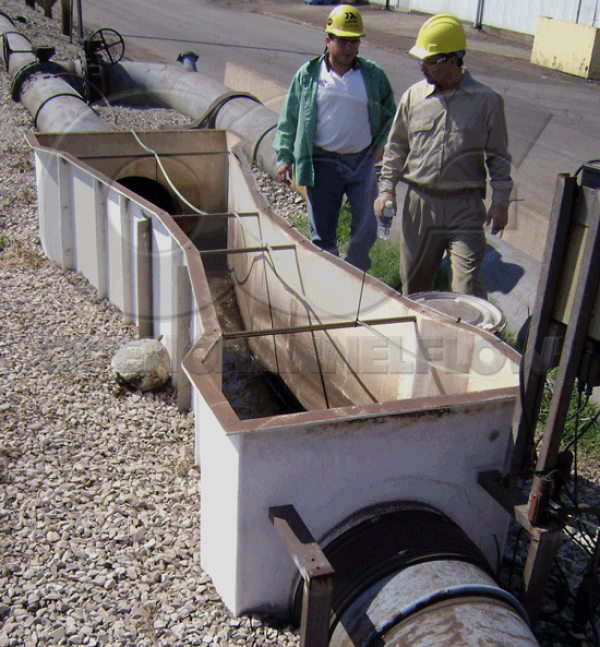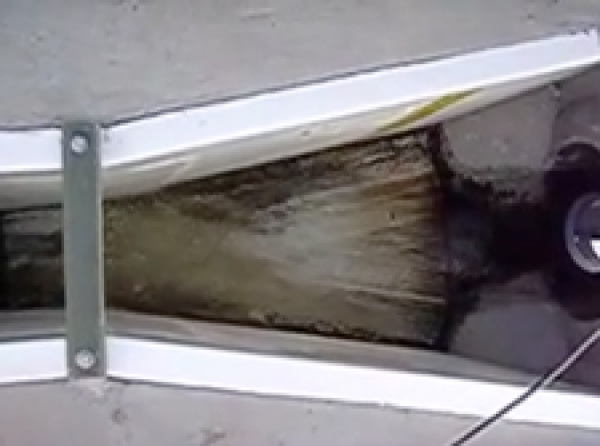This website uses a variety of cookies, which you consent to if you continue to use this site. You can read our Privacy Policy for
details about how these cookies are used, and to grant or withdraw your consent for certain types of cookies.
Pipe Slope and Flume Operation
When using a flume to measure pipe flow, the incoming pipe slope is a critical factor. Too great a slope and the flow into the flume will be too energetic and the flume won't produce accurate results.
How a Flume Operates
A flume operates by accelerating slow, subcritical flow to a critical state. This acceleration results in the flow rate being able to be determined at a single defined point upstream of the throat (accelerating section) of the flume.
Think of this in terms of air flow, accelerating from a subsonic flow to supersonic flow. If the flow is already fast due to excessive pipe slope (supersonic) then accelerating is will only make it faster (increasingly supersonic), but not make it change from one state to another (subsonic to supersonic).
Froude Number
Now whether the flow is subcritical, critical, or supercritical can be defined by the Froude number. Think of the Froude number as similar to the Mach number for air. Flows with Froude numbers below 1 are subcritical, those with a Froude of 1 are critical, and those that are supercritical have Froude numbers greater than 1.
So as we can see, we want the incoming Froude number to be less than 1. Ideally, however, the Froude number should be around 0.5, as above that value and surface waves can form, which can make accurate level measurement difficult.
Froude Number & Pipe Slope
How does this relate to pipe slope? Simple: the greater the slope, the greater the Froude number. Also, as the pipe size increases, the Froude number increases for a given slope.
So, for a given pipe size, there are a range of pipe slopes that are acceptable, generating Froude numbers from 0.5 to 0.99 (subcritical). The upper end of the subcritical regime should be avoided as it is easy to inadvertently transition into the critical / supercritical regimes and surface turbulence will most likely be present.
For example in normal sanitary sewers, the allowable pipe slope for a 4-inch pipe is 0.73-2.83, but for a 60-inch pipe the range of slopes is down to 0.31-1.16.
Conculsion
Takeaways:
- The flow entering a flume should have a Froude number between 0.5 (ideal) and 0.99.
- Above a Froude of 0.5 and surface turbulence may occur.
- The slope of pipe entering a flume should not exceed 2.83%.
- As the pipe size INCREASES, the allowable slope DECREASES.
Your local Openchannelflow representative can help you with determining if you pipe slope is appropriate for using a flume. If you flow needs conditioning prior to entering the flume, Openchannelflow has a range of flow conditioning accessories and structures to help.
Related Blog Posts
Explore more insights in our blog.

LOCATIONS IN ATLANTA, GA & BOISE, ID




